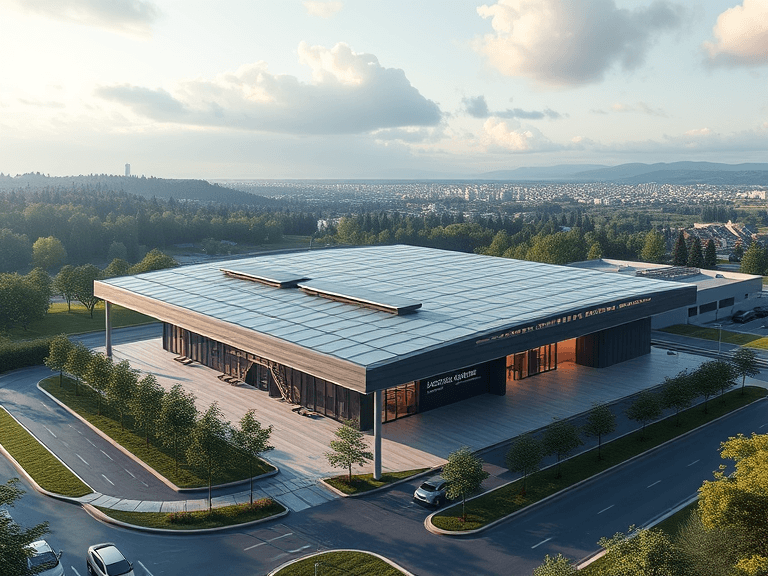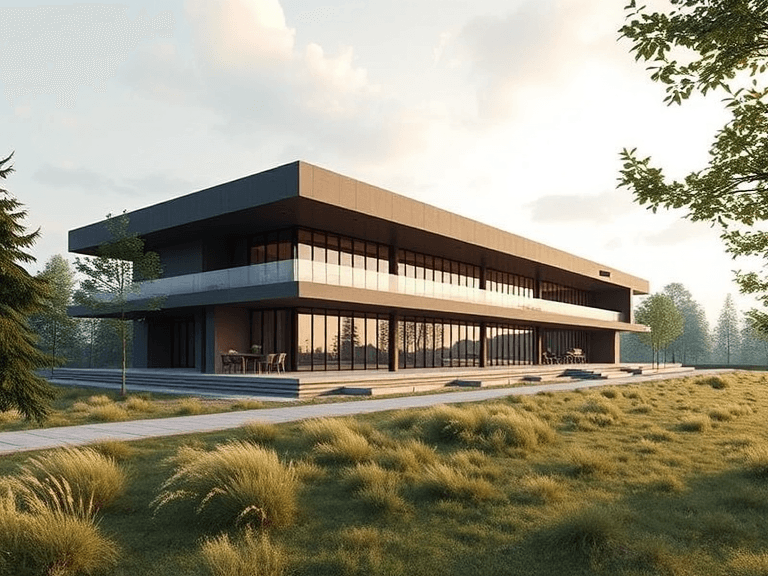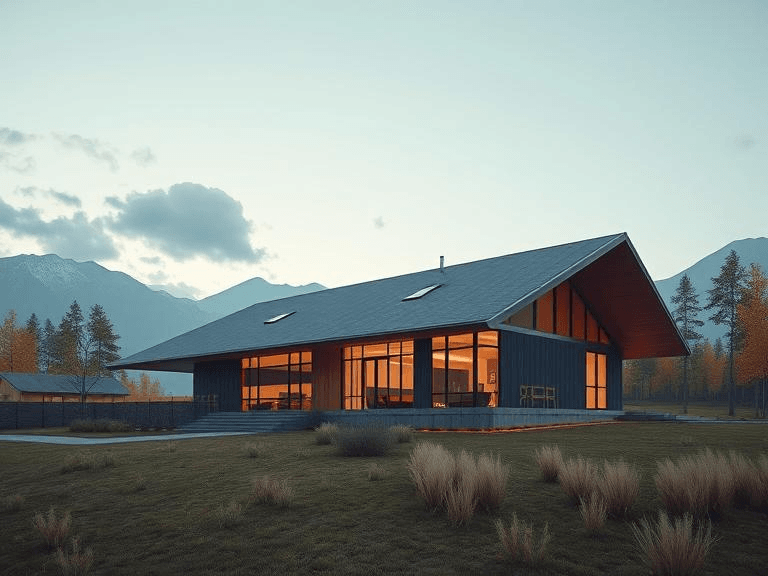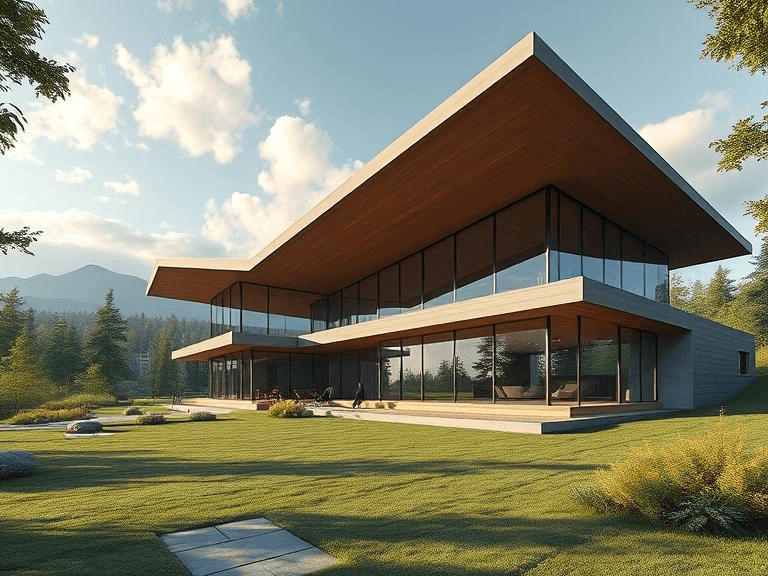
Flat roofs are architectural features characterized by their nearly level surfaces, as opposed to traditional sloped roofs. This design provides a unique aesthetic while serving functional purposes, particularly in large buildings where maximizing usable space is crucial. Unlike sloped roofs that facilitate water runoff, flat roofs require meticulous planning to manage water drainage effectively, often employing integrated drainage systems to prevent pooling.
Structurally, flat roofs are capable of supporting considerable weight due to their innovative design and robust materials. To compensate for gravity, a flat roof must be built with a strong framework, typically involving steel beams or reinforced concrete. The underlying structure is designed to ensure that the weight is distributed evenly, which is essential for the long-term durability and safety of the building. This construction approach allows architects and engineers to create expansive roof spaces without the complications associated with slopes.
Materials used in flat roofing systems significantly impact performance and longevity. Common options include built-up roofing (BUR), single-ply membranes, and modified bitumen. These materials are selected based on their resistance to moisture, UV degradation, and temperature extremes, as well as their overall compatibility with large-scale structures. For instance, single-ply membranes provide flexible, lightweight options ideal for extensive flat roofs, while BUR offers a more traditional approach with enhanced durability through multiple layers. Understanding these materials’ characteristics is vital, as it informs the decision-making process when selecting the appropriate flat roofing system for massive constructions.
Benefits of Flat Roofs for Large Structures
Flat roofs are increasingly popular in the construction of large buildings due to their varied advantages. One of the primary benefits is cost-effectiveness. Compared to pitched roofs, flat roofs require fewer materials, resulting in reduced labor and material costs during construction. This makes flat roofs an economical choice for architects and builders committed to maximizing value while minimizing expenditure.
Another notable advantage is the ease of maintenance associated with flat roofs. These roofs facilitate straightforward inspections and repairs, compared to their sloped counterparts, where maintenance can pose risks. Building owners can easily access the roof for routine checks, helping to identify problems before they escalate. This accessibility is particularly beneficial for large commercial and industrial structures where maintaining operational efficiency is critical.
Moreover, the design of flat roofs allows for additional usable space. This area can be utilized for various purposes, such as rooftop gardens or terraces, which not only contribute to the aesthetics of a building but also promote sustainability. Green roofs can enhance urban biodiversity and improve air quality, while also providing recreational space for tenants or employees. Such features can add significant value to the overall property.
Additionally, flat roofs simplify the installation of essential systems like HVAC units and solar panels. Commercial and industrial businesses often require substantial mechanical equipment that can be seamlessly integrated into flat roof designs. This arrangement reduces the complexity often associated with sloped roofs, thereby enhancing the operational efficiency of large buildings. With these numerous benefits, it becomes evident why huge buildings often feature flat roofs, proving them to be a practical and versatile choice for modern architectural needs.

Architectural Considerations
Flat roofs have become a prevalent feature in the design of huge buildings, serving both practical and aesthetic purposes in modern architecture. One primary reason for their adoption is their ability to complement contemporary architectural styles, which often emphasize minimalism and clean lines. The flat surface aligns seamlessly with geometric forms and angular designs that are characteristic of modern structures, allowing for a cohesive visual appearance. These characteristics underscore the architectural trend of prioritizing functionality while making a strong stylistic statement.
Moreover, the flat roof design enables architects to explore innovative building shapes and configurations, which are increasingly vital in urban environments where space is at a premium. With the ability to create expansive, uninterrupted interior spaces, flat roofs facilitate flexible floor plans, unencumbered by the need for pitched roofs or supporting structures. This versatility contributes to the functionality of large buildings, accommodating diverse uses ranging from residential areas to commercial spaces and public institutions.
Beyond functionality, the aesthetic appeal of flat roofs cannot be understated. They provide a sleek and modern appearance, which can be further enhanced through the use of materials appropriate for the specific architectural context. Furthermore, flat roofs can serve as terraces or green spaces, offering outdoor areas for recreational use, which integrate beautifully with the surrounding environment. This multifunctionality not only enhances the building’s appeal but also promotes sustainability through the possibility of incorporating gardens or solar panels.
As we analyze the role of flat roofs in architectural design, it becomes clear that they are more than just a stylistic choice; they represent a significant shift in how architects approach large building projects, merging aesthetics with practical considerations to redefine urban architecture.
Challenges and Solutions
Flat roofs, commonly found in huge buildings, present a unique set of challenges that must be managed effectively to ensure their longevity and functionality. One of the primary concerns associated with flat roofs is drainage. Unlike pitched roofs, which naturally facilitate water run-off, flat roofs can accumulate water, leading to potential leaks and structural damage. This necessitates the incorporation of advanced drainage systems that facilitate the safe removal of rainwater and prevent pooling.
Another challenge pertains to weather resistance. Flat roofs are often exposed to varying climatic conditions, including extreme heat, heavy rainfall, and snowfall. These environmental factors can strain roofing materials, possibly causing deterioration over time. To combat this issue, it is vital to select materials that are both durable and conducive to resisting harsh weather. High-quality membrane systems, such as EPDM and TPO, are commonly employed due to their significant lifespans and resilience against the elements.
Insulation problems are also prevalent in flat roof designs. Maintaining energy efficiency is essential, as inadequate insulation can lead to significant heat loss during colder months and overheating in warmer seasons. Utilizing the right insulation materials and techniques can vastly improve the thermal performance of flat roofs. Moreover, ensuring proper ventilation can mitigate temperature fluctuations inside the building, further contributing to energy conservation.
Regular maintenance practices play a critical role in extending the lifespan of flat roofs on large buildings. Routine inspections help identify early signs of wear and tear, allowing for prompt remediation. Additionally, the installation of adequate drainage systems and proactive selection of roofing materials can significantly minimize risks associated with flat roof ownership. In conclusion, while flat roofs in huge buildings pose specific challenges, a strategic approach to maintenance and material selection can lead to effective long-term solutions.


